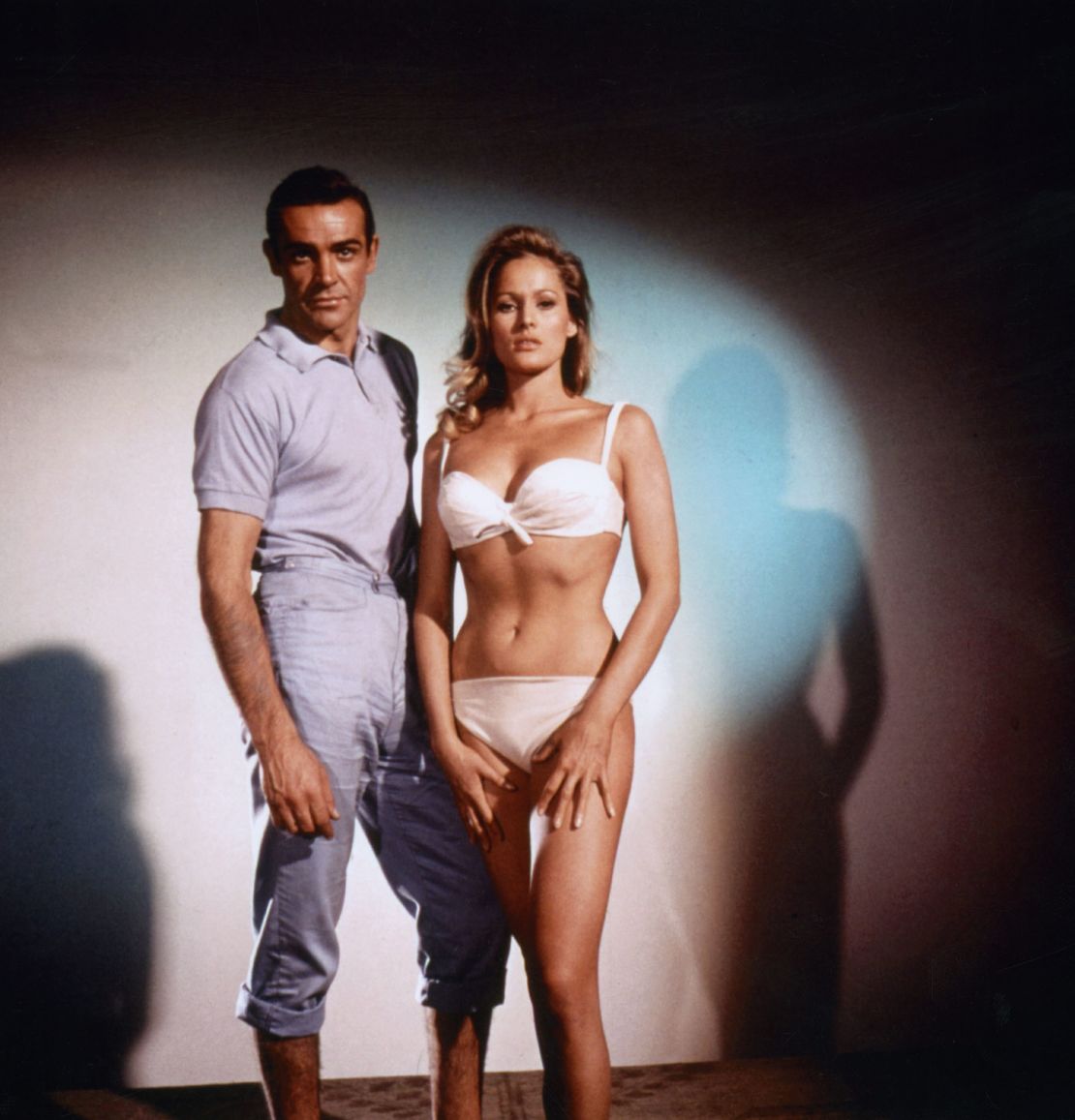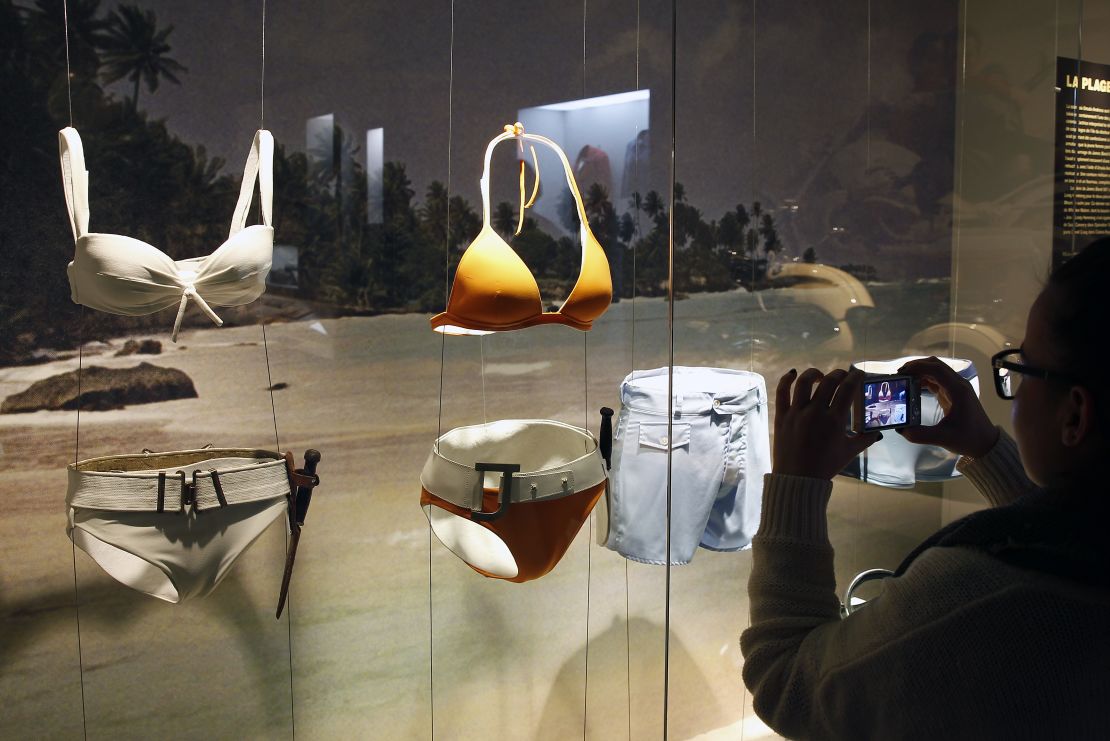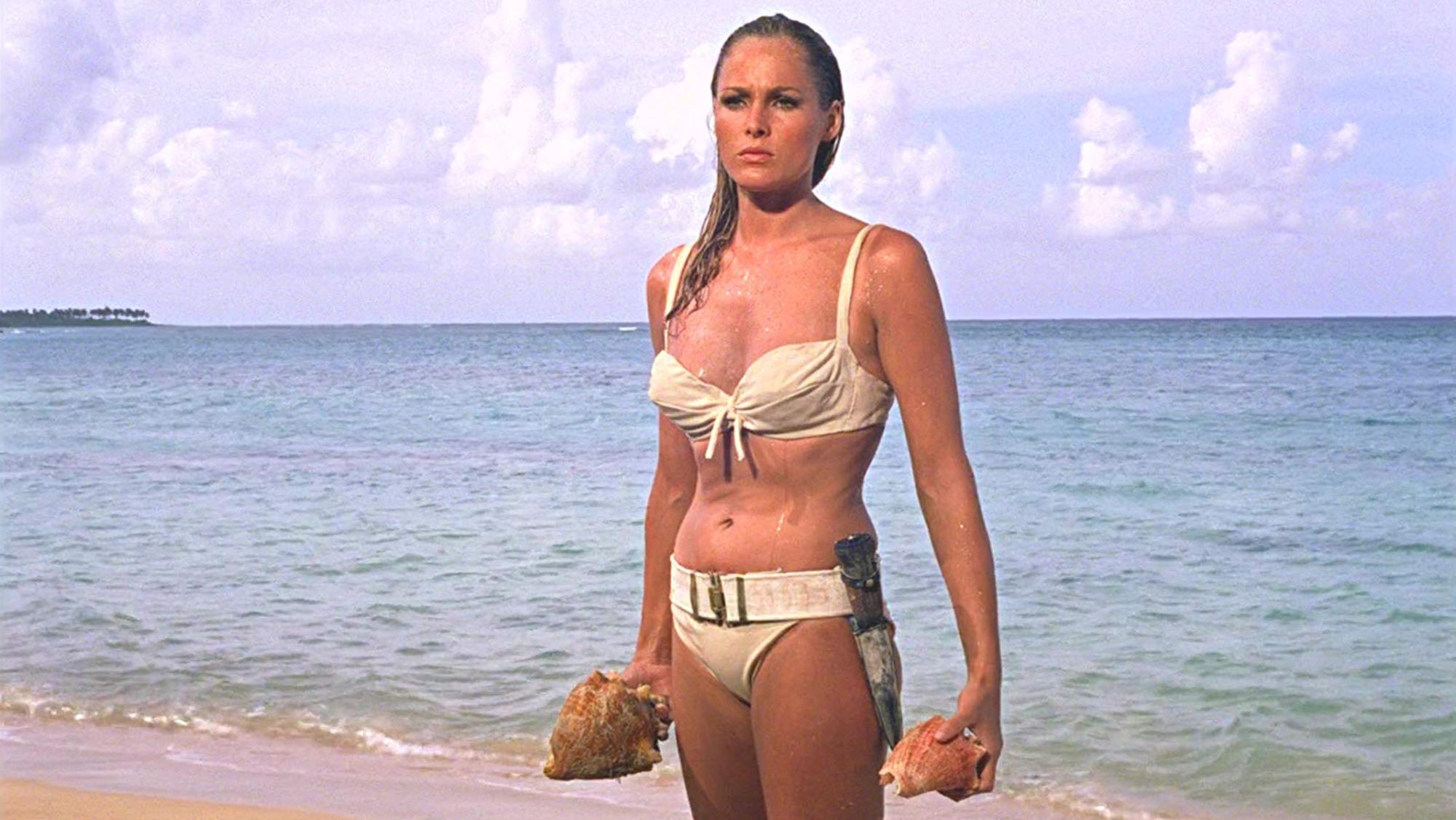Editor’s Note: Delving into the archives of pop culture history, “Remember When?” is a series offering a nostalgic look at the celebrity outfits that defined their eras.
This article, originally published in July 2019, has been updated with details of the November 2020 auction.
Remember when the statuesque Bond girl Honey Ryder emerged from the Caribbean Sea in a white bikini?
Well now, the glamorous swimsuit worn by actress Ursula Andress in the very first James Bond movie is going under the hammer. And with the beach scene from 1962’s “Dr. No” among the franchise’s most iconic, LA auction house Profiles in History is estimating that the bikini will sell for between $300,000 and $500,000 at next month’s sale.
With a wide, brass-buckled belt and a scabbard to hold a large knife, the outfit helped Andress make cinematic history and shape (quite literally) the concept of a modern-day femme fatale.
The Swiss-born actress’ character Ryder, a shell diver, was the original Bond girl – 007’s attractive female sidekick and “love” (read: “sex”) interest – who paved the way for a multitude of women playing variations of the exact same role in almost every Bond movie thereafter.
Her looks – killer body, model features – became the go-to criteria for screen personas stretching far beyond the Bond franchise (think of any blockbuster movie with “sexy yet tough” female characterizations, from Carrie Ann-Moss’ Trinity in “The Matrix” to Megan Fox as Mikaela Banes in “Transformers”).
Perhaps most importantly, her outfit propelled the bikini to new heights, and, for better and worse, spearheaded the now ubiquitous cinematic notion of eroticism built upon the male gaze. In the scene, Bond is hiding in the trees, glimpsing at Honey Ryder – an obvious innuendo that invites the viewer to do so, too.

Simply put, the very concept of a “bikini body” (not to mention countless beach montages) all began with Andress.
Before her “Dr. No” entrance, which is often hailed as the most iconic bikini scene of all time, the two-piece hadn’t enjoyed much screen time. First unveiled at a Paris fashion show in 1946, it would be regarded as too risqué for more than a decade. A 1949 article in Catholic newspaper, L’Osservatore Romano, even equated the bikini to the “Four Horsemen of the Apocalypse,” according to Patrik Alac’s book “Bikini Story: A Cultural History.”
But as Honey Ryder walked out of the waves, a major cultural shift was taking place around her. She had arrived at the beginning of the sexual and feminist revolutions of the 1960s. Women were growing more aware of their economic value and ideas of liberalization took hold of many aspects of their lives, fashion included.
To that end, Andress’ look was a statement – one designed to catch the attention of both male and female audiences. It worked. Women were just as mesmerized as men, and bikinis entered the mainstream after “Dr. No:” The year the movie came out, Playboy featured a bikini on its cover for the first time.
More bikini-clad actresses followed in Andress’ footsteps in the decades after: Raquel Welch in “One Million Years, B.C.” (1966), Carrie Fisher in “Return of the Jedi” (1983), Pamela Anderson in “Baywatch” (1992-1997) and Angelina Jolie in “Tomb Raider: Cradle of Life” (2003) all sported bikinis in their own iconic ways. Halle Berry, a Bond girl 40 years after Andress, went as far as recreating the emerging-from-the-ocean-scene in 2002’s “Die Another Day,” though she did so in an orange swimsuit.
Daniel Craig even appeared to reference Honey Ryder in his Bond debut, 2006’s “Casino Royale.” In a scene that became iconic in its own right (and was used in most of the film’s marketing), the actor walked out of the sea in a pair of tight trunks, looking just as toned and sexy as Andress had. Craig later told the Daily Telegraph that the shot was not a studied homage, but an accident.

Andress broke with Hollywood traditions of the time by having a hand in her own wardrobe design. The actress worked with director Terence Young and costume designer Tessa Welborn to stitch together a practical action garment that would fit her like a glove while showing some attitude (the knife sheath).
“This bikini made me into a success,” Andress is reported to have said in 2001, after rediscovering it in the attic of her home. Then aged 64, she auctioned it through Christie’s in London, where it fetched over £41,000 (then about $60,000).
But its value to Andress’ career was priceless. As well as earning her a Golden Globe, her turn in “Dr. No” gave her “the freedom to take my pick of future roles and to become financially independent,” she was quoted as saying in the auction catalog.
Honey Ryder might have helped define “sexy,” but an eye candy she was not.
